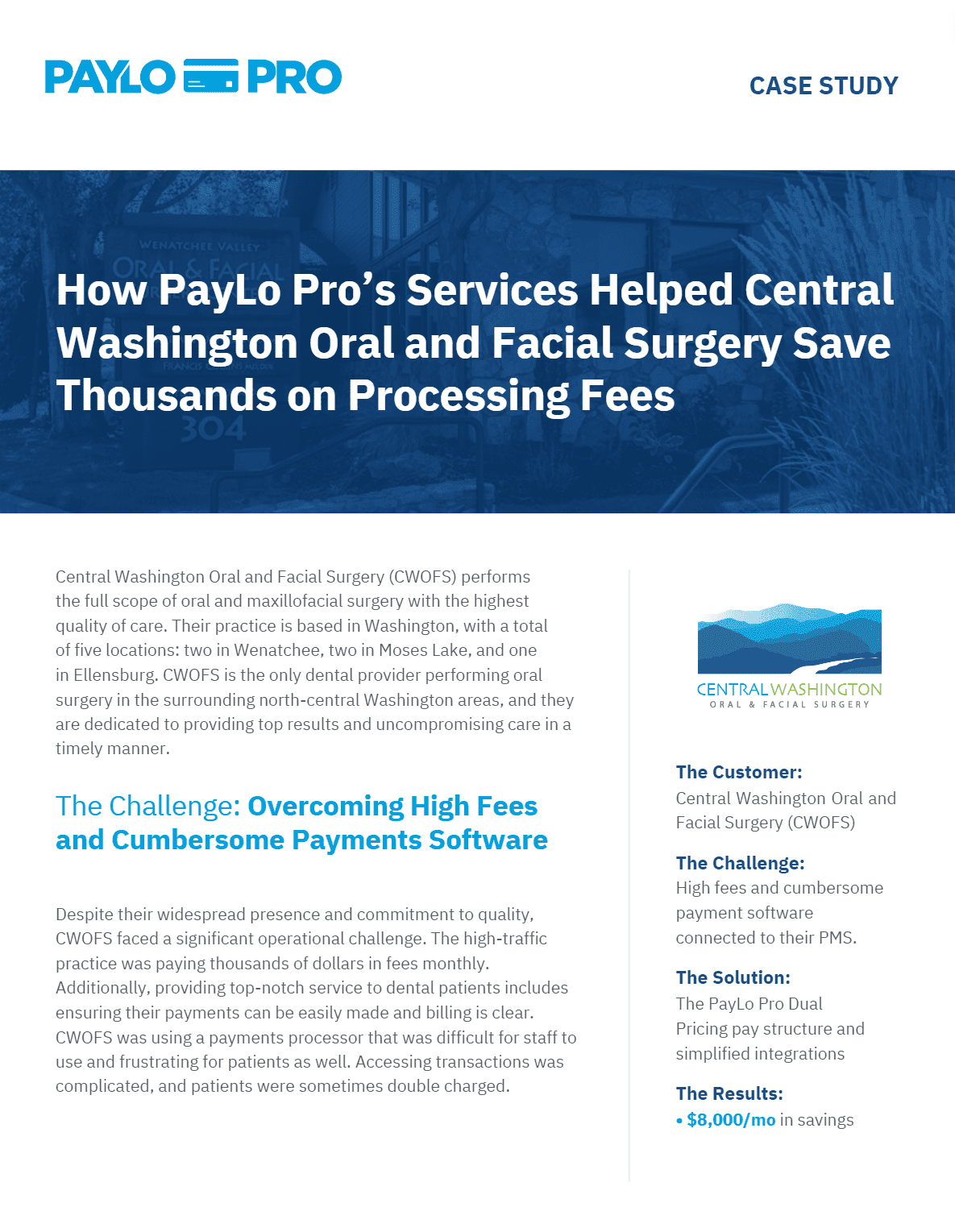In the medical sector, retaining skilled professionals is critical yet challenging. High turnover rates can disrupt patient care and increase operational costs. One innovative strategy to improve employee retention is implementing Dual Pricing. This approach not only benefits the practice financially but also creates opportunities to enhance employee satisfaction and loyalty. Here’s how medical, dental, and healthcare practices can leverage Dual Pricing to retain their valued employees.
Understanding Dual Pricing
Dual price payment processing is similar to cash discounting or surcharging. Each method helps cover processing costs by adjusting consumer pricing differently. Cash discounting involves displaying the same price for both cash and card payments, then applying a small discount for cash transactions. Surcharging, on the other hand, keeps prices the same for cash payments but adds a percentage to card transactions. In both cases, the collected fees are used to offset the business’s credit card processing expenses at the end of each month.
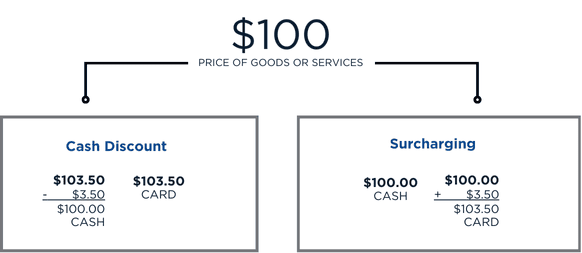
Challenges with Traditional Cash Discounts and Surcharging:
- Confusion: The addition of a surcharge or subtraction of a cash discount often confused patients and became a focal point for disputes.
- No PMS Integration: Running a cash discount or surcharge program separate from a PMS is cumbersome and reduces operational efficiency.
- Legal Issues: Surcharging is not legal in all states, and Cash Discount is not approved by Visa card regulations.
- No Fee Waiver Option: These programs lack easy options for practices to waive fees if needed on individual transactions.
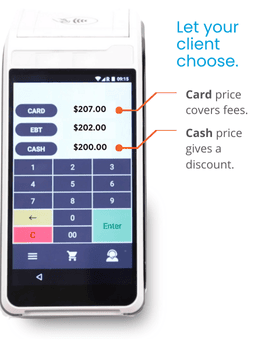
Evolution to Dual Pricing
Dual Pricing evolved from the necessity of a cleaner, easier way to pass processing fees to the consumer with the option to integrate directly to your existing PMS. Instead of displaying discounts and additions at checkout, there are simply two different price options displayed—one for cash and one slightly higher for credit cards. This methodology has seen a much higher adoption rate in the medical industry, with less consumer contention.
The savings associated with Dual Pricing can be significant for a wide range of practice types in the medical, dental, and veterinary sector. By minimizing these costs, practices can reinvest the savings into initiatives that directly benefit their employees.
Financial Benefits for Employee Compensation
A. Competitive Salaries:
- Savings from reduced card processing fees can be allocated to increase employee wages. Competitive pay is a key factor in employee retention, and even modest increases can significantly boost job satisfaction and loyalty.
B. Performance Bonuses:
- Implementing a system of performance bonuses funded by Dual Pricing savings can motivate employees and reward their hard work, fostering a culture of recognition and appreciation.
Employee Benefits Example:
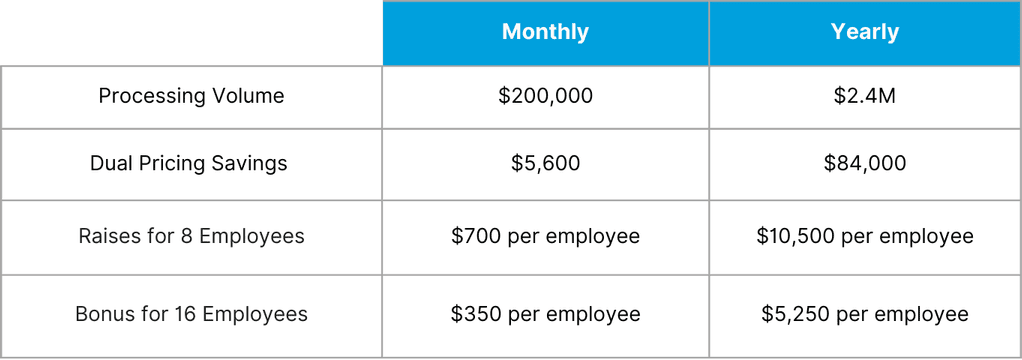
Enhanced Benefits Package
A. Comprehensive Health Benefits:
- Use the savings to offer more comprehensive health benefits, such as better health insurance plans, dental and vision coverage, and wellness programs. Enhanced benefits packages make employees feel valued and cared for, increasing their commitment to the practice.
B. Additional Perks:
- Consider providing additional perks such as childcare support, fitness memberships, or tuition reimbursement. These benefits can help employees manage their personal lives better, reducing stress and improving overall job satisfaction.
Investment in Professional Development
A. Continuous Education:
- Allocate funds towards continuous education opportunities for employees. Providing access to advanced training, certifications, and professional development courses not only enhances skills but also demonstrates a commitment to their career growth.
B. Clear Career Pathways:
- Establish clear career advancement pathways and provide resources for employees to achieve their goals. Knowing that there are opportunities for progression within the practice can increase loyalty and reduce turnover.
Improving Work Environment and Culture
A. Modernized Facilities:
- Invest in upgrading workplace facilities. This could include better medical equipment, ergonomic office furniture, and improved break rooms. A comfortable and modern work environment can significantly enhance job satisfaction.
B. Employee Recognition Programs:
- Use the savings to implement robust employee recognition programs. Regularly acknowledging and rewarding hard work and dedication can boost morale and foster a positive work culture.
Case Study:
Central Washington Oral and Facial Surgery Center
The Challenge
High fees and cumbersome payment software connected to their existing PMS.
The Solution
PayLo Pro Dual Pricing and simplified integrations.
The Results
$8,000 per month in savings
Enhancing Work-Life Balance
A. Flexible Scheduling:
- Financial savings can support more flexible scheduling options, such as allowing for part-time shifts, remote work, or more generous vacation policies. Flexibility is highly valued by employees and can lead to improved retention rates.
B. Mental Health Support:
- Invest in wellness programs that support employees' mental health. This could include access to counseling services, stress management workshops, and mindfulness programs.
Building a Sense of Ownership and Loyalty
A. Profit Sharing Programs:
- Implementing profit-sharing programs can give employees a direct stake in the practice’s success. When employees see a tangible benefit from the financial health of the practice, they are more likely to feel invested and loyal.
B. Transparency and Inclusion:
- Communicate openly with employees about the financial benefits of Dual Pricing and how those savings are being used to benefit them. Involving employees in financial decisions can foster a sense of inclusion and trust.
Conclusion
Implementing Dual Pricing in healthcare practices is a strategic move that extends beyond cost savings. By reallocating the savings from reduced card processing fees into employee compensation, benefits, professional development, and workplace improvements, practices can create a more supportive and satisfying work environment.
In an industry where employee retention is crucial to delivering high-quality patient care, innovative approaches like Dual Pricing can make a significant difference. By focusing on the well-being and growth of their employees, healthcare practices can build a loyal, motivated, and high-performing workforce that drives long-term success.


